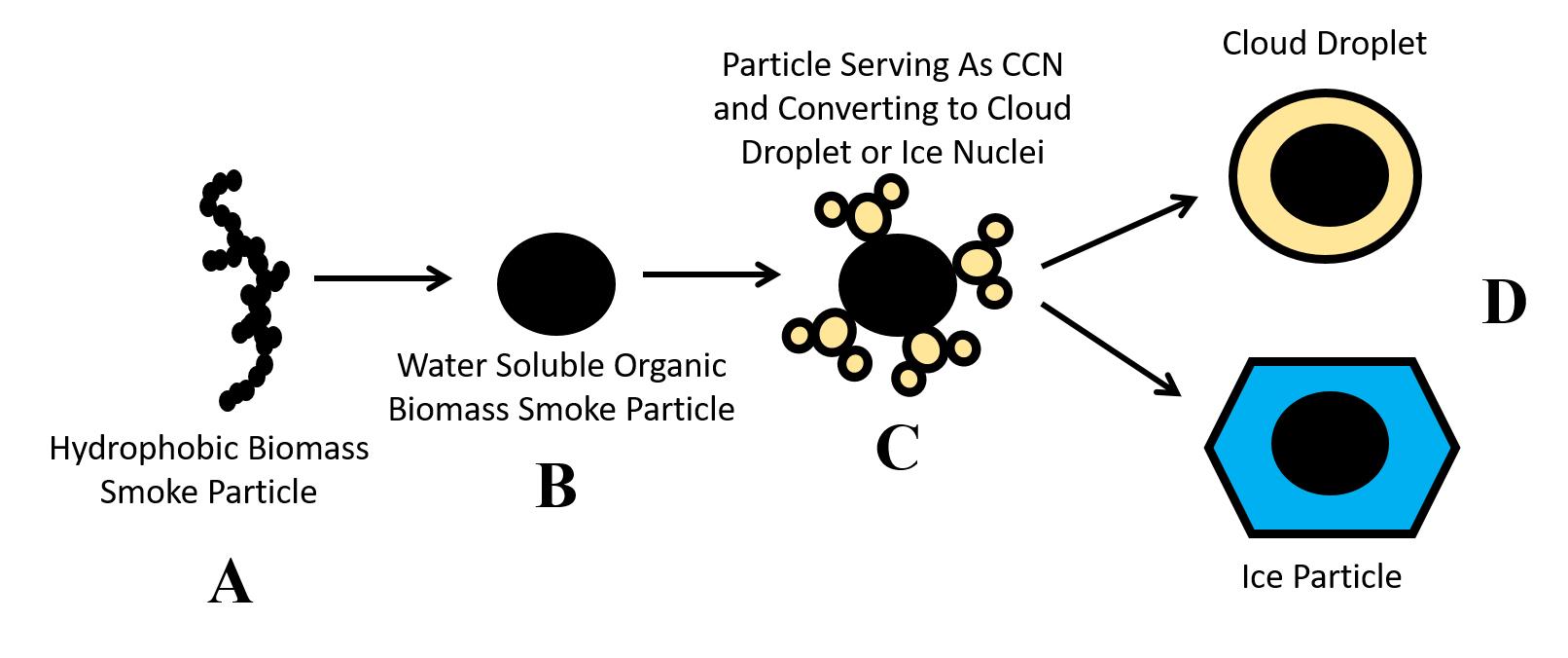Cloud formation and the amount of rain that can be brought by these clouds can be negatively affected due to the amount of aerosols in the atmosphere, which can include wildfire smoke, sea salt and air pollutants.
A new study of these effects was worked on by a team of researchers including Tim Logan, instructional assistant professor of atmospheric sciences at Texas A&M, and Xiquan Dong, a professor of hydrology and atmospheric science at the University of Arizona. Dong said in the preface to the research paper that the interaction between aerosol content and the climate in a particular region is one of the biggest uncertainties when it comes to predicting climate change.
“The treatment of aerosols, clouds, radiation and precipitation in climate models has always been one of the largest sources of uncertainty in predicting any potential future climate changes,” Dong wrote. “Characterizing the effects of aerosols and clouds on energy and understanding the interaction among aerosols, clouds, radiation and precipitation are critical for weather forecasting and climate models.”
Logan said aerosols are defined as particles that are in the atmosphere and can include both good and bad types based on what they are affecting.
“Depending on what type of aerosols there are, that affects how the cloud develops,” Logan said. “The main ones to cloud formation include sea salt, pollution, mineral dust and wildfire smoke.”
The cloud is affected from the very beginning by the inclusion of aerosols, Logan said. Due to the pollution, it can negatively affect rain development.
“In order for clouds to develop, they need these particles,” Logan said. “They condense around these particles, start out as condensation nuclei and then they develop into larger cloud droplets and eventually become rain. So depending on the condensation nuclei there are, that affects if there’s a lot of rain or not.”
Logan said not all aerosols are bad for cloud formations though — depending on the type that helps create the condensation nuclei, it can even help in the formation of more clouds.
“In a companion study we did back in 2014 was a research site in the eastern North Atlantic and we watched how aerosol plumes would come overhead and how the clouds would develop,” Logan said. “Different aerosol types led to an increased concentration in cloud condensation nuclei and some decreased it as well.”
Logan said some areas with big pollution hubs, such as China, are being researched heavily to figure out how aerosols are affecting its weather.
“In all honesty, that is still being hotly researched over there,” Logan said. “Asia is going through growing pains sort of like how we did through the industrial revolution and as their technology becomes better and cleaner, there should be a decline in pollution.”
While uncertainty about the interaction between cloud formation, climate change and aerosol is going to take a while according to Logan, many aspects of it are continually being researched by scientists.
“There’s always something different you can find,” Logan said. “You take what you learn and you can branch out into other stuff.”
A&M professor studies effects of aerosols
February 11, 2018
Photo by Photo by Anthony Pangonas
Professor Tim Logan has studied how rain development is effected by aerosols.
0
Donate to The Battalion
$1765
$5000
Contributed
Our Goal
Your donation will support the student journalists of Texas A&M University - College Station. Your contribution will allow us to purchase equipment and cover our annual website hosting costs, in addition to paying freelance staffers for their work, travel costs for coverage and more!
More to Discover











